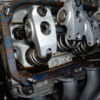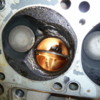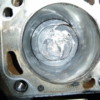quote:
Originally posted by 1Rocketship:
THANKS for posting the pictures & relaying the conditions found.
A GREAT reminder as per Garth, Doug's & many other experiences is that ...DON'T TRUST ANY advertised specifications, seemingly & SADLY quality is a long forgotten memory, & an individual's due-diligence & personal inspection, measuring, testing of each & every individual component is mandatory!...Mark
While I agree that the assembly of the valve train needs to be checked at each and every step of assembly, that is doable and necessary by me or your builder, it is not possible during that assembly to verify BY ME (or your builder) that each and every component meets the minimum specification that the manufacturer intended. The manufacturer HAS to do that.
This has become even more of an issue now with attempts at much higher horsepower engines and as a result coming closer to the ultimate yield stresses of ALL of the components.
These are nothing less than ultimate race engines being put into street use and they have even under the best conditions a much shorter usable life span.
The answer is to just back off on some of these components like solid roller camshafts.
No one seems to heed the cautions? Now everyone has me reviewing my own valve train and cam specs?
Solid roller camshafts on the street are just disasters waiting to happen. The disaster IS going to happen. The only question is when, where and HOW bad? I just see them as a common denominator to be avoided.
Again. I am sorry for the loss. This just plain sucks.









